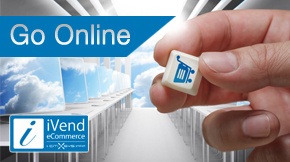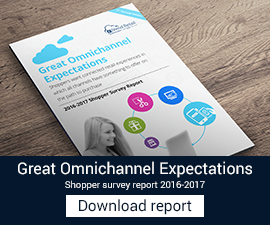 If customer loyalty is important for the success of your business—and it obviously is—it becomes even more so in an economic climate like the one we are experiencing today. Fortunately, new innovations in the retail sector like the advent of online and mobile channels has made it much easier for you to launch targeted and cost effective campaigns to promote long-term relationships with your customers.
If customer loyalty is important for the success of your business—and it obviously is—it becomes even more so in an economic climate like the one we are experiencing today. Fortunately, new innovations in the retail sector like the advent of online and mobile channels has made it much easier for you to launch targeted and cost effective campaigns to promote long-term relationships with your customers.
It is important to note however that such campaigns should ideally be redeemable through the channel of your customer’s choice. To maximize success, you need to promote brand advocacy across all sales channels using a mix of technology and business capability that allows your customers to engage with your brand on their own terms. You can accomplish this by taking the following steps:
- Implement a system-wide strategy for gathering and evaluating customer information for personalized promotions, with a centralized marketing database to give you a unified view of your customers, and facilitate unified messaging and channel strategies. Also, appoint a customer officer to supervise and manage all aspects of your customer loyalty programs, including promotions, events and campaigns.
- Designate a cross-departmental team to set guidelines for tracking and measuring the success of your loyalty systems, making sure that customer needs are a key component of your cross-channel loyalty offerings and that you maintain a consistent message rather than sending varied messages depending on channels of delivery. You want to know that you are using all sales channels to attain integrated customer loyalty programs resulting in retention, engagement and reactivation.
- Integrate mobile marketing into your cross-channel loyalty programs by taking advantage of strategies like mobile coupons delivered through web marketing, mobile apps, Short Message Service (SMS) and Multimedia Messaging Service (MMS).
- Conduct social media campaigns. For example, start up an online community as part of an opt-in micro-site with information on products, promotional offers, and web events exclusively for your loyalty members—then expand to include games, online contests, in-store events and mobile device interactions for loyalty customers.
- Identify more ways you can use online communities to connect with target populations as part of an integrated customer loyalty program. You might want to create fan pages to form exclusive communities with user generated content and promotional offers that allow consumers to follow and interact with you online; or set up your micro-site so when customers engage with your brand you can receive suggestions regarding product and operations. You can then implement the ones you judge beneficial to both your brand and your customers, giving them a sense of being part of a special community and of having part ownership in their own shopping experiences.
Additional components commonly used as part of an effective loyalty system include:
- Merchandise-centric promotions geared around bundling merchandise packages together in up-sell and cross-sell opportunities.
- Membership discount cards as part of a paid plan program offering specific promotions to its members and access to exclusive deals and promotions around seasonal merchandizing.
- Rewards or frequency offers for retaining current and regular customers, typically extending benefits based on how often the customer shops, like dollars or point perks when specific spending or frequency thresholds are crossed. This might also include a multi-tier loyalty program aimed at rewarding your most lucrative customers and personalizing their purchasing experiences by providing incentives like pre-sales on select items, priority access to products with limited inventory, discounts, and exclusive offers based on their purchasing patterns.
A proper mixture of the above components across all channels while operating a thoroughly integrated cross-channel loyalty program is an extremely effective recipe for boosting long-term customer loyalty.



 It enables, YOU, the manager to more closely control the combined operation as compared to either two physical stores, or an off-line and on-line operation that are not integrated or synchronized.
It enables, YOU, the manager to more closely control the combined operation as compared to either two physical stores, or an off-line and on-line operation that are not integrated or synchronized.




